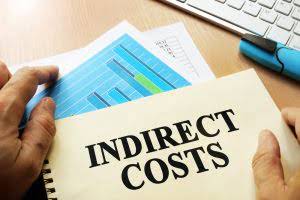Content

Accrued Revenue – money that is being earned over a period of time that covers more than one accounting period and recorded periodically. It will not be formally billed within the accounting period being reported. If it is impossible to locate the errors despite the above steps, the difference in the trial balance is transferred to the suspense account, and it is thus tallied. The suspense account will be eliminated when all errors are located.
What are the two types of reserves?
Reserves are divided into two types: Revenue Reserves. Capital Reserves.
If the trial balance totals do not agree, you should try to find the error. It verifies that all the debits & credits are correctly posted and accurately calculated. The stage after completing all postings involves extracting information from the books of all balances to create a trial balance. The preparation of financial statements has to start somewhere. It is prepared at the end of the period (e.g. month, quarter, year) before any adjusting entries are made. Even if you’re not the one in charge of the preparation of financial statements, this article will still be a worthwhile read. Any adjustments required at the period end not previously accounted for are incorporated into the trial balance.
6 Balancing off accounts and preparing a trial balance
The first step toward interpreting the financial results of your business is preparing a trial balance report. As a learner/instructor, you need to consider those accounts whose DR and CR totals are equal. In such a scenario, the account is closed down and it is excluded in the trial balance. This is because the trial balance is a financial statement where we post only ledger accounts with DR Or CR balances which are more than zero value. Trial balance includes the closing balances of all the general ledger accounts. Whereas balance sheet includes the upper portion of trial balance, and gives a good deal of information. Trial balance is prepared before the preparation of Balance sheet.
- You’ll be preparing the unadjusted and adjusted trial balance once a month if your business is reporting financial statements on a monthly basis.
- Thereafter total of debit and credit money columns of a trial balance is calculated.
- This balance is nothing but the balance shown by the ledger account.
- If the debit balance is more significant than the credit balance, the difference is put in the debit columns.
- Accountants use a trial balance to test the equality of their debits and credits.
- About the Author – Dr Geoffrey Mbuva(PhD-Finance) is a lecturer of Finance and Accountancy at Kenyatta University, Kenya.
An error can be as simple as entering a debit balance as a credit balance, or it could be as complicated as failing to post a journal entry. You’ll be preparing the unadjusted and adjusted trial trial balance example balance once a month if your business is reporting financial statements on a monthly basis. It’s the end of an accounting period which means it is time to prepare your financial statements.
Errors in Trial Balance
Liability and owner’s equity accounts such as accounts payable and capital reflect the position of liabilities and capital at the end of the accounting period. Asset accounts like cash, accounts receivable, inventory, furniture, etc., show the position of the assets at the end of the accounting period. The sales account is totaled to show total sales of $2,125 for the month, which in effect is the credit balance taken to the trial balance.
What are the types of trial balance?
The three types of trial balances are: Unadjusted trial balance. Adjusted trial balance. Post-closing trial balance.
It may also be stated as a statement of the total debit and credit balances extracted from the various accounts in the ledger to examine the mathematical exactness of the books. A trial balance is a report of all accounting transactions entered throughout the accounting period. Its main purpose is to ensure that all debits equal all credits for the transactions entered during that time.
Preparing a Trial Balance for Your Business
Of course, a trial balance that has the total debits equal to the total credits does not mean that the general ledger is free of errors. For instance, recording a debit entry into the Equipment account instead of recording the debit in the Equipment Repairs Account will not be uncovered by the trial balance. The debit side and credit side of ledger accounts are added up. The total of the debit side is placed in the debit column and the total of the credit side in the credit column of the trial balance.
The unadjusted trial balance is an unadulterated listing of the accounts from the general ledger. It gives them an idea of how much cash is available, what the level of revenue is, the status with debtors and creditors, etc., even before the actual financial statements are prepared. The unadjusted trial balance is just the first of the three trial balances that you’ll have to prepare. An unadjusted trial balance is a listing of all the accounts found in a general ledger.
Preparing A Trial Balance
Janet Berry-Johnson is a CPA with 10 years of experience in public accounting and writes about income taxes and small business accounting. Check the posting made from the journal or subsidiary books in the ledger.
A tool for detecting errors-this is the parameter that is used to detect errors occurring in the course of the financial period. Although not all errors will be detected, it to some extent used as a tool to identify errors of a certain category. When preparing the trial balance, the balance brought down (bal b/d) is the one considered. Such that if the balance is a DR balance b/d, it is recorded on the DR side of the trial balance. On the other hand, if the balance brought down (bal b/d) is a CR balance, it is recorded on the CR side of the trial balance. So the question is, what should one do when he or she overdraws from his bank account? Instead, the cashbook, the bank column is the tool that represent such a transaction.
Provides a basis for adjustments
The Open University has 50 years’ experience delivering flexible learning and 170,000 students are studying with us right now. Enrol and complete the course for a free statement of participation or digital badge if available. Free statement of participation on completion of these courses.

As per the definition of the trial balance, it is the first step in the preparation of the accounts of the statement of any firm. It is prepared at the end of the year of an accounting period https://www.bookstime.com/ to assist in preparing the final accounts. In some situations, even though the debits and credits are equal, it cannot be predicted that there are no errors in the trial balance.

